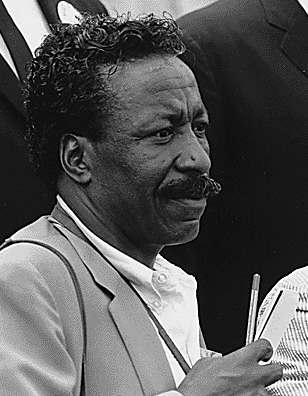
Gordon Roger Alexander Buchanan Parks was an American photographer, composer, author, poet, and film director, who became prominent in U.S. documentary photojournalism in the 1940s through 1970s—particularly in issues of civil rights, poverty and African Americans—and in glamour photography. He is best remembered for his iconic photos of poor Americans during the 1940s, for his photographic essays for Life magazine, and as the director of the films Shaft, Shaft's Big Score and the semiautobiographical The Learning Tree.
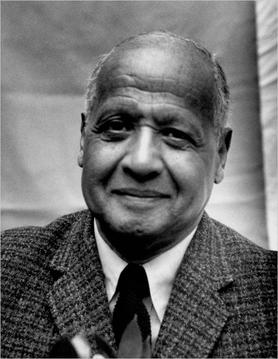
Roy Rudolph DeCarava was an American artist. DeCarava received early critical acclaim for his photography, initially engaging and imaging the lives of African Americans and jazz musicians in the communities where he lived and worked. Over a career that spanned nearly six decades, DeCarava came to be known as a founder in the field of black and white fine art photography, advocating for an approach to the medium based on the core value of an individual, subjective creative sensibility, which was separate and distinct from the "social documentary" style of many predecessors.
Malick Sidibé was a Malian photographer from a Fulani village in Soloba, who was noted for his black-and-white studies of popular culture in the 1960s in Bamako. Sidibé had a long and fruitful career as a photographer in Bamako, Mali, and was a well-known figure in his community. In 1994 he had his first exhibition outside of Mali and received much critical praise for his carefully composed portraits. Sidibé's work has since become well known and renowned on a global scale. His work was the subject of a number of publications and exhibited throughout Europe and the United States. In 2007, he received a Golden Lion for Lifetime Achievement at the Venice Biennale, becoming both the first photographer and the first African so recognized. Other awards he has received include a Hasselblad Award for photography in 2003, an International Center of Photography Infinity Award for Lifetime Achievement (2008), and a World Press Photo award (2010).
Mario Algaze was a Cuban-American photographer who photographed musicians and celebrities, in rural and urban areas, throughout Latin America.
Skip Bolen is a Southern photographer of musicians, architecture, lifestyle and the culture of New Orleans. Born in Lafayette, Louisiana, he moved to New Orleans where he began his publishing career as a designer and art director. After moving to New York City, he began working at House & Garden, renamed HG, as Senior Designer in January 1988 with Anna Wintour and Alexander Liberman at Condé Nast Publications. Spending evenings in jazz clubs, he began photographing jazz musicians in New York City and often when he regularly returned to New Orleans. After three years at Condé Nast Publications in New York City, he returned to New Orleans to pursue his jazz photography full-time. In 1998, he moved to Los Angeles where he became art director of House of Blues for seven years while photographing at night and weekends. He continued photographing jazz musicians and had his first major solo exhibition at the Jazz Bakery in Los Angeles on August 9, 2002. On July 4, 2006, he returned to New Orleans to pursue photography full-time documenting the recovery and rebuilding of New Orleans since Hurricane Katrina, documenting the jazz scene, night-time photography and other photographic projects.
Mildred Jean Thompson was an American artist who worked in painting, drawing, printmaking, sculpture and photography. Critics have related her art to West African textiles and Islamic architecture; they have also cited German Expressionism, music and Thompson's readings in astronomy, spiritualism and metaphysics as important artistic influences. She also wrote and was an associate editor for the magazine Art Papers.
Larry Silver is an American photographer. He was born in the Bronx. While a student at the High School of Industrial Art in Manhattan he met members of the Photo League, among them Lou Bernstein, W. Eugene Smith and Weegee. He won a first prize in the Scholastic-Ansco Photography Awards, and a scholarship to the Art Center School in Los Angeles. Silver takes black-and-white photographs, mainly documenting the places he has lived: Santa Monica Beach, California; New York City; and Westport, Connecticut.
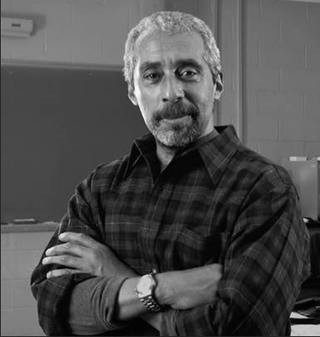
Jules Allen is an American photographer, author, and educator. He is known for his photographs of African-American culture. He is an emeritus professor of Queensborough Community College of the City University of New York, where he has taught for two decades in the art and photography department.
Amalia K. Amaki is an African-American artist, art historian, educator, film critic and curator who recently resided in Tuscaloosa, Alabama, where she was Professor of Modern and Contemporary Art at the University of Alabama at Tuscaloosa from 2007 to 2012.

William (Kross) Greiner in New Orleans, Louisiana, is an American photographer and multi-media artist living in Santa Fe, NM.
Anthony Barboza is a photographer, historian, artist and writer. With roots originating from Cape Verde, and work that began in commercial art more than forty years ago, Barboza's artistic talents and successful career helped him to cross over and pursue his passions in the fine arts where he continues to contribute to the American art scene.
Johnson Donatus Aihumekeokhai Ojeikere, known as J.D. 'Okhai Ojeikere, was a Nigerian photographer known for his work with unique hairstyles found in Nigeria.
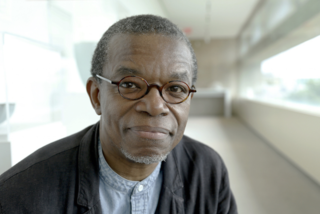
Bill Gaskins is an American photographer and academic. His work explores the intersection of black hair and critical analysis of the portraiture in the 21st century. In his book Good And Bad Hair: Photographs, Gaskins tackles the role of hairstyling and the representation in African American culture and he also examines the transcultural role of hair, adornment of ornaments and personal identity with the body.

Sheila Pree Bright is an Atlanta-based, award-winning American photographer best known for her works Plastic Bodies, Suburbia, Young Americans and her most recent series #1960Now. Sheila is the author of #1960Now: Photographs of Civil Rights Activist and Black Lives Matter Protest published by Chronicle Books.

Ming Smith is an American photographer. She was the first African-American female photographer whose work was acquired by the Museum of Modern Art in New York City.
Nancy Floyd, born in Monticello, Minnesota in 1956, is an American photographer. Her photographic subjects mainly concern women and the female body during youth, pregnancy, and while aging. Her project She's Got a Gun comprises portraits of women and their firearms, which is linked to her Texas childhood. Floyd's work has been shown in 18 solo exhibitions and is held in the collections of the Museum of Contemporary Photography and the High Museum of Art. Floyd is a professor emeritus of photography at the Ernest G. Welch School of Art and Design at Georgia State University.
Frank Hunter is an American documentary and fine-art photographer and university educator. He is known for his photographic landscapes and his mastery of the platinum/palladium process. His interest in photographic processes includes the technical process of exposure and development as well as the psychological and spiritual aspects of creating photographic work. "Hunter has always been famed for transforming the utterly familiar to something rich and strange."
Roland Charles was an African-American photographer and gallerist, best known for co-founding The Black Photographers of California and its associated exhibition space, the Black Gallery, in Los Angeles, among the first institutions by and for black photographers.
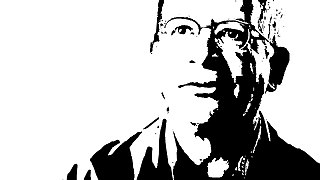
Frank Stewart is an African-American photographer based in New York. He is best known for photographing prominent Jazz musicians.
Baldwin Lee is a Chinese-American photographer and educator known for his photographs of African-American communities in the Southern United States. He has had solo exhibitions at the Chrysler Museum of Art and the Museum of Contemporary Art of Georgia, and received a Guggenheim Fellowship. His work is held in many private and public collections including the Museum of Modern Art in New York, Yale University Art Gallery, and the National Gallery of Art in Washington, DC.










